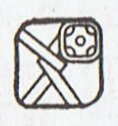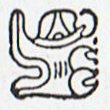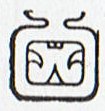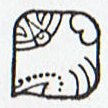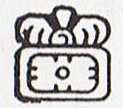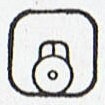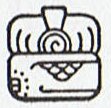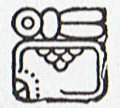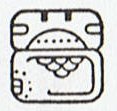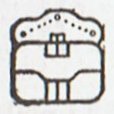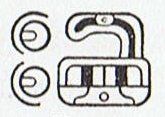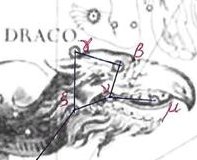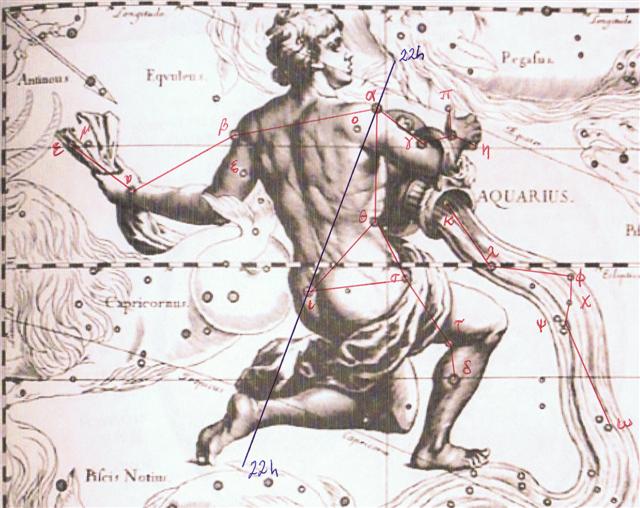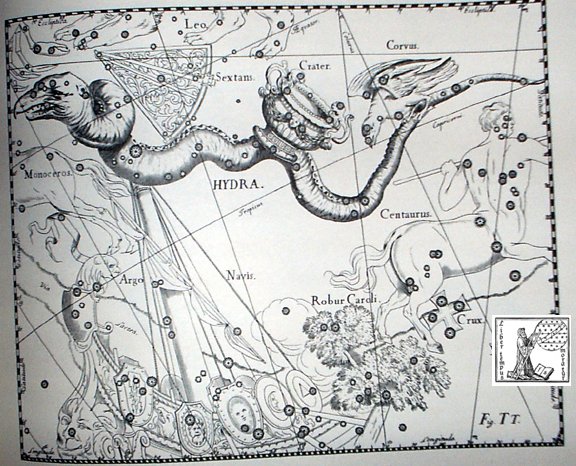The origin of the timespace structure for the year could have been the evident division of the diurnal cycle in night and day. There was a dark season and there was a season with much light: ... In north Asia the common mode of reckoning is in half-year, which are not to be regarded as such but form each one separately the highest unit of time: our informants term them 'winter year' and 'summer year'. Among the Tunguses the former comprises 6½ months, the latter 5, but the year is said to have 13 months; in Kamchatka each contains six months, the winter year beginning in November, the summer year in May; the Gilyaks on the other hand give five months to summer and seven to winter. The Yeneseisk Ostiaks reckon and name only the seven winter months, and not the summer months. This mode of reckoning seems to be a peculiarity of the far north: the Icelanders reckoned in misseri, half-years, not in whole years, and the rune-staves divide the year into a summer and a winter half, beginning on April 14 and October 14 respectively. But in Germany too, when it was desired to denote the whole year, the combined phrase 'winter and summer' was employed, or else equivalent concrete expressions such as 'in bareness and in leaf', 'in straw and in grass' ... The colour of straw is yellow and that of grass is green. Perhaps Yaxkin (Green Sun) was the name for a 'year of grass' and Kankin (Yellow Sun) corresponding to a 'year of straw':
14 (Kankin) * 20 = 280. But then there would be 4 * 20 + 5 = 85 days outside this 'year in straw and grass'. When Julius Caesar defined 'March 25 as the day for spring equinox he maybe regarded this day as number 85 - i.e. by counting from 'December 31. On the other hand, the first 3 * 20 = 60 nights before Zotz would open his mouth (vaha mea) - probably in a gesture to indicate the arrival of space (air, breath) between the upraised sky and the earth - could have represented the time before 'March 1:
Moan - when the high summer sky would close down - could have begun in day 281 counted from 'December 31, i.e. in 'October 7 (280). Or, if the ancient heliacal stars were consulted, in OCTOBER 7 (*200):
... One never knows what one treads underfoot ... When Julius Caesar introduced July and August as new months in the calendar, it could have meant the array of months beyond August would have shifted 2 positions ahead, for instance with the 7th month (September) now occupying place 9 instead of the earlier place 7. However, it appears as if there were only name changes: from Quintilis to July and from Sextilis to August. September was therefore still month number 7 counted from the first month Martius:
Anciently the Polynesians had a year with 10 months: ... From the natives of South Island [of New Zealand] White [John] heard a quaint myth which concerns the calendar and its bearing on the sweet potato crop. Whare-patari, who is credited with introducing the year of twelve months into New Zealand, had a staff with twelve notches on it. He went on a visit to some people called Rua-roa (Long pit) who were famous round about for their extensive knowledge. They inquired of Whare how many months the year had according to his reckoning. He showed them the staff with its twelve notches, one for each month. They replied: 'We are in error since we have but ten months. Are we wrong in lifting our crop of kumara (sweet potato) in the eighth month?' Whare-patari answered: 'You are wrong. Leave them until the tenth month. Know you not that there are two odd feathers in a bird's tail? Likewise there are two odd months in the year.' The grateful tribe of Rua-roa adopted Whare's advice and found the sweet potato crop greatly improved as the result ... The Maori further accounted for the twelve months by calling attention to the fact that there are twelve feathers in the tail of the huia bird and twelve in the choker or bunch of white feathers which adorns the neck of the parson bird ... 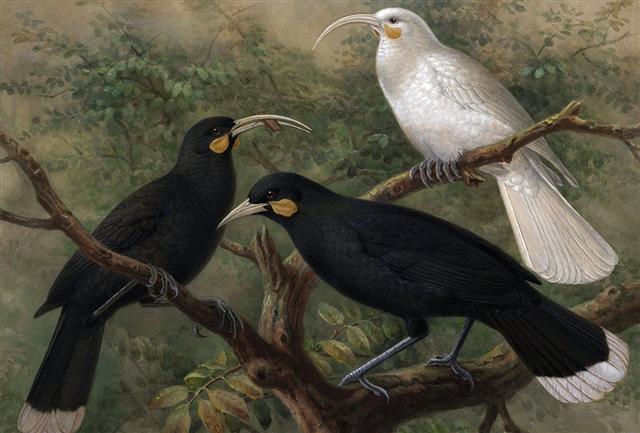
Ianuarius and Februarius were the 11th and 12th months counted from Martius. Because of the precession the stars connected with this pair of months would have moved ahead with about 2 months since the time of Taurus. Perhaps the beginning of the text on the G tablet was at heliacal Taurus instead of at the back of the head of Andromeda.
In Babylonian times the planet Mars was at the tail of the Goatfish. The warrior Mars (Marduk) was responsible for cutting the dark winter ogre in half. ... Marduk, die Frühsonne des Tages und des Jahres, wurde eben wegen dieses seines Charakters der Lichtbringer am Weltmorgen. Marduk, der die leblose, chaotische Nacht, die keine Gestaltungen erkennen lässt, besiegt, der den Winter mit seinem Wasserfluten, den Feind des Naturlebens, überwindet, wurde der Schöpfer des Lebens und der Bewegung, der Ordner des Regellosen, der Gestalter des Unförmlichen am Weltmorgen ... Die Sonne, die des Morgens das Weltmeer durchschreitet und besiegt und das Licht bringt, lässt aus dem Chaos der Nacht zuerst den Himmel, dann erst die Erde hervortreten, spaltet das gestaltlose Reich der Nacht in die zwei Hälften, den Himmel und die Erde ... I think the first 3 Mayan 20-day months could have corresponded to those 60 days which precession had moved the fixed stars ahead since the time of the Bull. The position of the planet Mars could then still have been connected with the tail of the Capricorn and March (the month of Mars) would have moved ahead with 60 days. Zotz was probably March (or to be more precise: the first 20 days of March). With his left hand Aquarius held the dry towel in a firm grip and with his right hand he made a thumb up sign:
Half a year later Mars would have reached a position close to the Full Moon:
The Babylonian map above appears to be 'in tune' with the positions of the stars in Roman times, when in 'January 15 (*300) the Sun was at Castra and Bunda. In rongorongo times the Sun would have been there 27 days later, in February 11 (407). The difference between 407 and 300 is 107, which might give us a clue to why the G text is 107 glyphs longer than 364. ... On February 9 the Chorti Ah K'in, 'diviners', begin the agricultural year. Both the 260-day cycle and the solar year are used in setting dates for religious and agricultural ceremonies, especially when those rituals fall at the same time in both calendars. The ceremony begins when the diviners go to a sacred spring where they choose five stones with the proper shape and color. These stones will mark the five positions of the sacred cosmogram created by the ritual. When the stones are brought back to the ceremonial house, two diviners start the ritual by placing the stones on a table in a careful pattern that reproduces the schematic of the universe. At the same time, helpers under the table replace last year's diagram with the new one. They believe that by placing the cosmic diagram under the base of God at the center of the world they demonstrate that God dominates the universe. The priests place the stones in a very particular order. First the stone that corresponds to the sun in the eastern, sunrise position of summer solstice is set down; then the stone corresponding to the western, sunset position of the same solstice. This is followed by stones representing the western, sunset position of the winter solstice, then its eastern, sunrise position. Together these four stones form a square. They sit at the four corners of the square just as we saw in the Creation story from the Classic period and in the Popol Vuh. Finally, the center stone is placed to form the ancient five-point sign modern researchers called the quincunx ... Later on in this series of rituals, the Chorti go through a ceremony they call raising the sky. This ritual takes place at midnight on the twenty-fifth of April and continues each night until the rains arrive. In this ceremony two diviners and their wives sit on benches so that they occupy the corner positions of the cosmic square. They take their seats in the same order as the stones were placed, with the men on the eastern side and the women on the west. The ritual actions of sitting down and lifting upward are done with great precision and care, because they are directly related to the actions done by the gods at Creation. The people represent the gods of the four corners and the clouds that cover the earth. As they rise from their seats, they metaphorically lift the sky. If their lifting motion is uneven, the rains will be irregular and harmful ...
... Among the multitude of gods worshipped by these people were four whom they called by the name Bacab. These were, they say, four brothers placed by God when he created the world at its four corners to sustain the heavens lest they fall ... ... In the ms. Ritual of the Bacabs, the cantul kuob [the suffix '-ob' indicates plural], cantul bacabob, the four gods, the four bacabs, occur constantly in the incantations, with the four colors, four directions, and their various names and offices ... ... This connects up the present section with the beginning of the 'sacred tonalamatl', at the Spring equinox with the Mayas as with the Mexicans, and in the center of the 364-day year (52 days of which preceded and 52 followed the tonalamatl or tzolkin), ruled by its 91-day quarters by the Four Bacabs, whose quarternary repetition (in the 1820-day period) we have thus verified ... 2 * 52 + 107 = 211, a number possibly alluding to February 11 (2-11). Counting backwards 52 + 107 = 159 days from February 11 means reaching back to day 407 - 159 = 248 (September 5) - when the sacred tonalamatl should have finished. In the G text we could find this place by moving 183 - 159 = 24 paces ahead. 80 (Ga3-21) + 24 = 104 (Ga4-21):
|
|||||||||||||||||||||||||||||||||||||||||||||||||||||||||||||||||||||||||||||||||||||||||||||||||||||||||||||||||||||||||||||||||||||||||||||||||||||||||||||||||||||||||||||||||||||||||||||||||||||||||||||||||||||||||||||||||||||||||||||||||||||||||||||||||||||||||||||||||||||||||||||||||||||||||||||||||||||||||||||||||||||||||||||||||||||||||||||||||||||||||||||||||||
